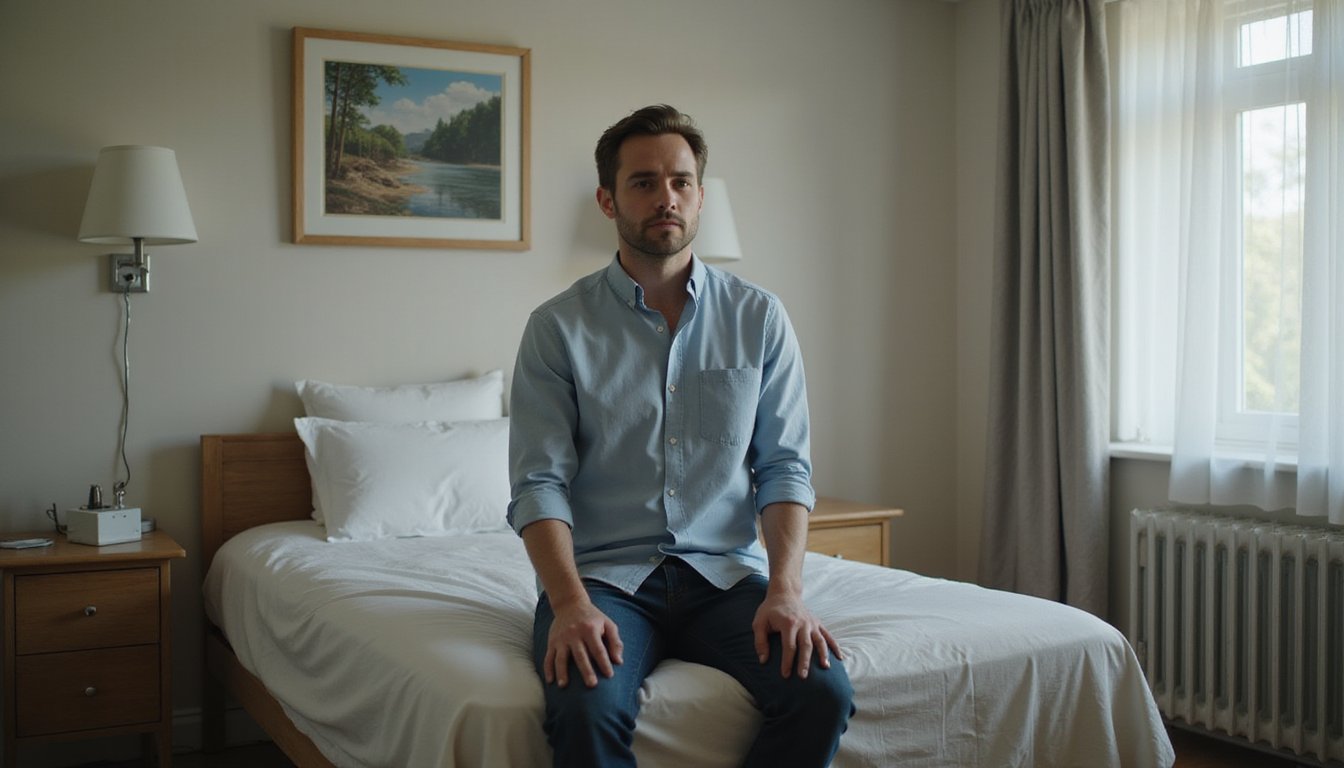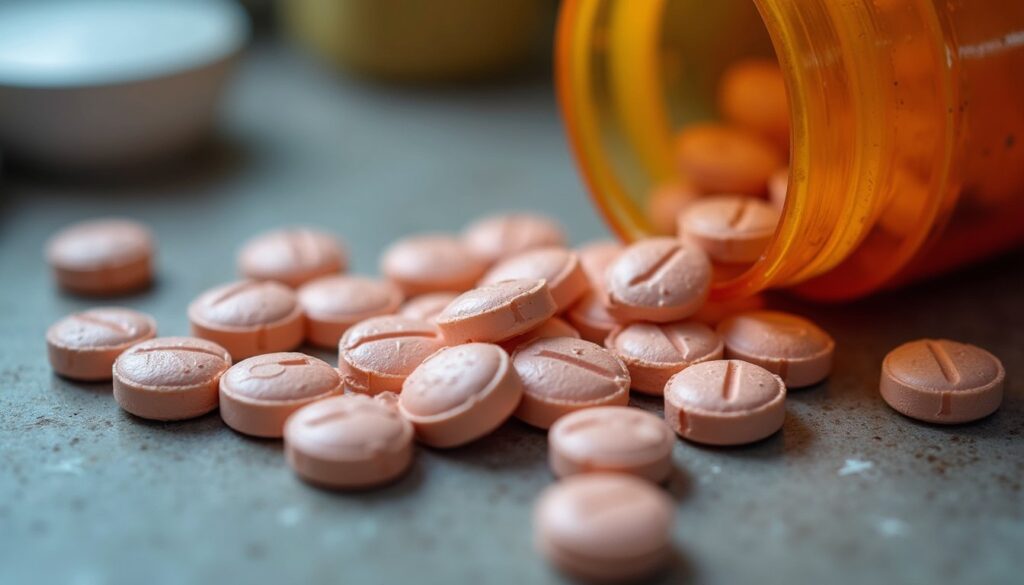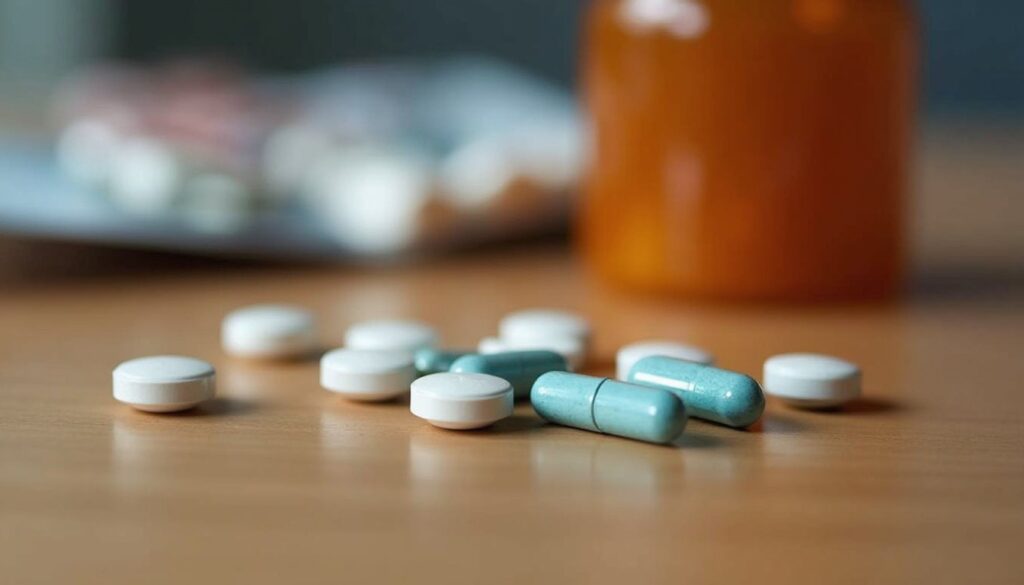Valium withdrawal challenges your body and mind as your nervous system recalibrates without benzodiazepines. You’ll likely experience anxiety, insomnia, tremors, and muscle tension starting within days, with symptoms peaking during week two when seizure risks are highest. Medical detoxification involves gradual tapering over 8-12 weeks under professional supervision, while therapy addresses psychological symptoms like depression and cognitive impairment. About 20-30% of people require intensive supportive care during this process. Understanding each phase of withdrawal and the detailed treatment approach will help you navigate this arduous but manageable path toward lasting recovery.
Understanding Valium Withdrawal Symptoms: Physical and Psychological Effects

When you stop taking Valium after prolonged use, your body responds with a constellation of withdrawal symptoms that range from uncomfortable to potentially life-threatening. Physically, you’ll likely experience tremors, muscle twitching, gastrointestinal distress, and cardiovascular changes like heart palpitations. Neurologically, you face risks including seizures, sensory hypersensitivity, and visual disturbances.
Psychologically, the effects stem from neurotransmitter imbalance as your brain recalibrates. You may experience rebounding anxiety, depression, and irritability, often more severe than your original symptoms. While serotonin dysfunction contributes to mood disruptions, the primary mechanism involves GABA receptor downregulation. Cognitive impairment, confusion, and in severe cases, hallucinations or suicidal ideation can emerge. These symptoms reflect your nervous system’s struggle to restore equilibrium without chemical dependence. The withdrawal timeline typically unfolds in stages, with the peak stage occurring between 5-14 days after your last dose, when symptoms like severe anxiety, insomnia, tremors, and sweating reach their maximum intensity. Because Valium accumulates in the body over extended periods, physical dependence can develop even when taking the medication as prescribed for therapeutic purposes. Your body gradually cuts back production of natural anxiety-relieving chemicals as it becomes reliant on Valium’s effects, which explains why withdrawal symptoms emerge when the medication is discontinued.
The Timeline of Valium Withdrawal: What Happens Week by Week
Understanding these withdrawal symptoms becomes more meaningful when you map them onto a predictable timeline. Valium’s long half-life delays onset, with minimal symptoms appearing during days 1–2, followed by anxiety and insomnia. Symptoms peak during week two, creating the highest risk window for seizures and severe complications. Professional medical detox programs evaluate addiction severity during intake and establish an individualized timeline for safely managing the withdrawal process. Approximately 20-30% of people experience severe withdrawal symptoms that require supportive care and medication adjustments throughout the detox process.
| Timeline | Primary Symptoms | Clinical Considerations |
|---|---|---|
| Days 1–7 | Anxiety, restlessness, nausea, headaches | Delayed onset due to long half-life |
| Week 2 | Severe anxiety, tremors, sweating, insomnia | Peak intensity; highest seizure risk |
| Weeks 3–4 | Stabilizing symptoms, mood changes | Acute symptoms taper off |
| Weeks 5–8 | Mild anxiety, sleep issues | Most physical symptoms resolve |
| After 8 weeks | Protracted withdrawal patterns possible | Risk factors for relapse require ongoing support |
Medical Detoxification Process: Safe Tapering and Professional Support

Because Valium withdrawal carries serious medical risks, including seizures, delirium, and cardiovascular instability, medical detoxification under professional supervision isn’t just recommended; it’s crucial for safety. Your detox team will develop an individualized tapering protocol, typically reducing your dosage by 10–25% every one to two weeks based on your withdrawal response. Continuous monitoring of essential signs and mental status allows for prompt medication adjustments when adverse effects emerge. Treatment coordination between physicians, nurses, and behavioral health specialists guarantees comprehensive care throughout the process. Accredited detox centers with 24-hour medical staff substantially reduce complication risks, with structured tapering achieving successful discontinuation in 65–80% of cases. Physical withdrawal symptoms such as impaired vision, numbness, tremors, and intense stomach pain can persist for weeks or months, requiring ongoing medical attention. Each person’s withdrawal experience differs based on factors including medication history, overall health status, and age. Psychosocial and biomedical screening work together to provide a complete picture of your health needs and determine the most appropriate level of care. This gradual approach, combined with symptom management and emergency protocols, creates the safest pathway through withdrawal toward enduring recovery.
Managing the Emotional Recovery: Therapy and Mental Health Support
While medical detoxification addresses the physical challenges of Valium withdrawal, the psychological and emotional dimensions of recovery demand identically rigorous attention. You’ll likely experience anxiety, depression, and mood instability as your brain readjusts to functioning without benzodiazepines. Comprehensive therapy becomes essential for sustainable healing.
Dual diagnosis treatment approaches integrate mental health care with addiction treatment, addressing co-occurring conditions like anxiety disorders or trauma. Your therapeutic interventions may include:
- Cognitive-behavioral therapy (CBT) to restructure negative thought patterns and develop healthy coping mechanisms
- Dialectical behavioral therapy (DBT) for enhanced emotional regulation
- Individual counseling focused on relapse prevention strategies and self-esteem restoration
- Group therapy providing peer accountability and community connection
- Family therapy addressing relationship dynamics affecting recovery outcomes
Regular psychiatric assessment guarantees emerging emotional challenges receive prompt intervention, supporting long-term stability. Outpatient counseling and sober living homes provide structured environments that reinforce your commitment to recovery. Outdoor activities and team sports can complement traditional therapy by promoting physical wellness and engagement throughout your recovery process. Support groups like Narcotics Anonymous offer ongoing peer support and accountability throughout your recovery journey.
Building a Sustainable Recovery: Long-Term Healing and Relapse Prevention

Successfully completing detoxification marks only the beginning of your recovery expedition—maintaining long-term sobriety requires deliberate lifestyle restructuring and sustained commitment to relapse prevention. You’ll need to establish healthy lifestyle habits including regular sleep schedules, nutritious eating, and consistent exercise to strengthen your resilience. Developing a continuous growth mindset through ongoing therapy, aftercare programs, and support groups greatly reduces relapse risk. Your individualized relapse prevention plan should identify personal triggers and include cognitive-behavioral strategies for managing cravings. Structured environments like sober living houses provide essential accountability during early recovery. Long-term recovery programs provide ongoing support to maintain lasting sobriety and prevent relapse throughout your healing journey. Engaging in meaningful activities, vocational training, volunteering, or hobbies—supports positive identity transformation. Regular monitoring with addiction specialists, combined with stress management techniques like mindfulness, helps you detect warning signs early and maintain sustainable recovery progress. When seeking online resources, be aware that security service protections may temporarily limit website access, requiring you to contact site administrators for assistance. If you encounter access issues, you can email the site owner with your Cloudflare Ray ID and details about your actions when the block occurred to help resolve the problem.
Frequently Asked Questions
Can I Withdraw From Valium Safely at Home Without Medical Supervision?
Withdrawing from Valium at home without medical supervision isn’t safe. Home detox risks include life-threatening seizures, severe cardiovascular changes, and unmanaged psychological crises that occur in 20-30% of cases. You can’t monitor dangerous neurological symptoms or intervene during emergencies on your own. Medical supervision importance can’t be overstated—professionals provide customized tapering, emergency intervention, and achieve 65-80% success rates. Your safety requires clinical oversight, especially given Valium’s serious withdrawal complications.
Will Withdrawal Symptoms Return if I Take Valium Again After Detox?
Yes, withdrawal symptoms will likely return if you take Valium again after detox. Your brain’s GABA receptors remain sensitive, and re-exposure can trigger rebound anxiety even faster than before. The kindling effect means each withdrawal cycle typically worsens symptoms and shortens the time before they reappear. You’ll also face increased seizure risk with repeated cessation attempts. That’s why maintaining complete abstinence and working with medical professionals for relapse prevention is essential.
How Does Valium Withdrawal Compare to Withdrawal From Other Benzodiazepines?
Valium withdrawal typically unfolds more gradually than other benzodiazepines due to its longer half-life. You’ll experience a delayed onset—symptoms may begin 1–4 days after stopping, compared to hours with shorter-acting drugs. The time period of withdrawal extends 10–14 days or longer, while the severity of withdrawal symptoms tends to be less intense initially but more prolonged. Short-acting benzodiazepines produce sharper, more abrupt rebound anxiety and insomnia, whereas Valium creates a smoother, extended withdrawal curve.
Can I Work or Drive During the Valium Withdrawal Process?
You shouldn’t drive or operate machinery during Valium withdrawal due to impaired cognition, decreased alertness, and seizure risk. Managing daily activities requires medical supervision and workplace accommodations. Coping with workplace challenges means communicating openly with employers about necessary modifications or time off. Your concentration, reaction time, and decision-making abilities are profoundly compromised. We strongly recommend taking medical leave during acute withdrawal phases. Once symptoms stabilize under professional guidance, you’ll gradually resume normal activities safely.
Are There Medications That Help Reduce Valium Withdrawal Symptoms?
Yes, several medications can ease your withdrawal symptoms. A medically assisted detox provides the safest approach, where your physician creates a personalized tapering down schedule using Valium or another long-acting benzodiazepine. They’ll also prescribe symptom-specific medications—anticonvulsants prevent seizures, SSRIs manage anxiety and depression, and sleep aids address insomnia. While no FDA-approved drug specifically treats benzodiazepine withdrawal, these supportive medications substantially reduce discomfort and dangerous complications during your recovery.











